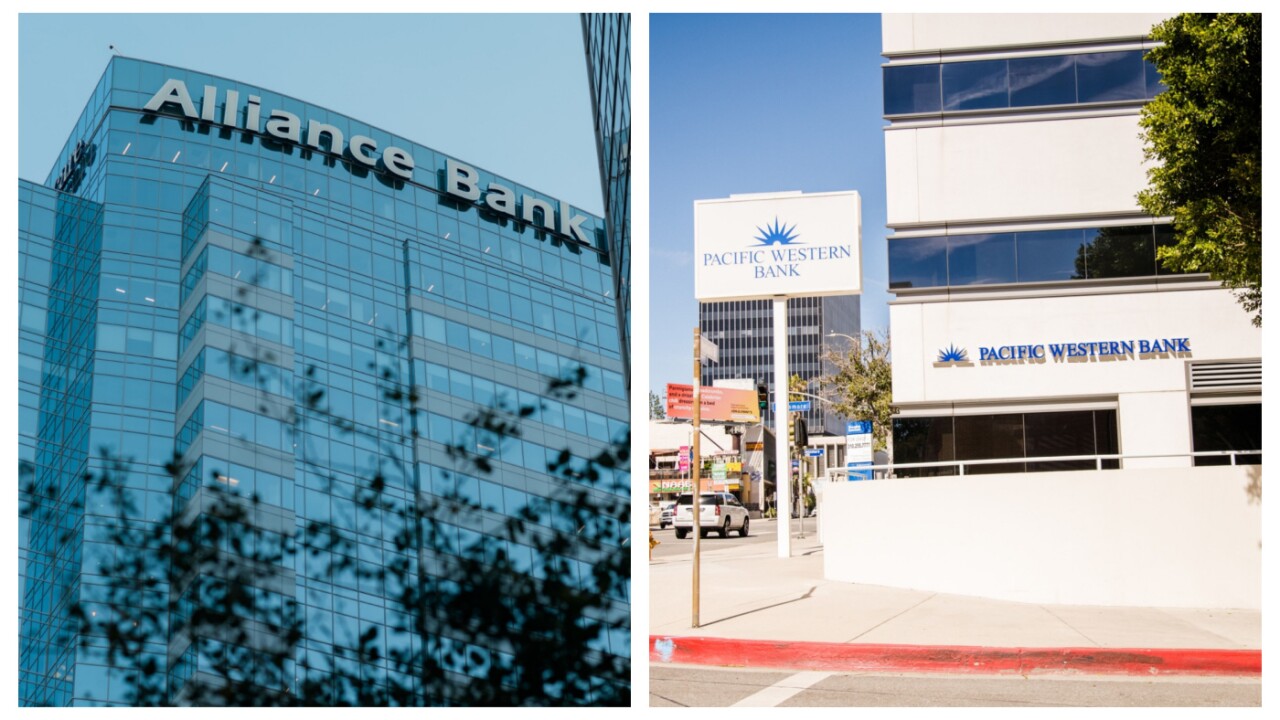Commercial banking
The two banks failed to meet a requirement that they document their efforts to combat discrimination in lending and employment, according to city officials. KeyBank said the decision was the result of a misunderstanding.
-
Venture capital banking and wealth management are two areas where the nation's largest bank sees a chance to make gains amid a rash of bank failures. After the company's investor day on Monday, one analyst wrote: "Goliath is winning."
May 22 -
The Cincinnati, Ohio, bank targeted Rize Money due to its "ease of accessibility," according to Fifth Third's head of wholesale payments. The acquisition comes as the $205 billion-asset bank has seen wealth and asset management revenue decline in recent years.
May 22
-
The Florida lender hired corporate bankers in New York City who had previously worked at First Republic Bank, which collapsed last week.
May 11 -
The Federal Reserve's survey of senior loan officers is being closely watched since it follows the recent turmoil in the banking industry, which has prompted concerns that a pullback in bank lending could slow economic growth.
May 8 -
Rock-bottom stock prices at midsize banks are fueling concerns that depositors could get spooked, and short sellers are drawing much of the blame. But their persistence may be exposing a broader lack of confidence in the industry.
May 7 -
On one level, the failed bank's narrative mirrors the interest rate misplay and depositor panic at Bay Area neighbor Silicon Valley Bank. But it's also a deeply personal story about Herbert, who founded First Republic in the 1980s, championed its aggressive growth and failed in a last-ditch attempt to engineer a private-sector rescue.
May 3 -
This has been a difficult year for the industry with government takeovers of three regional institutions, which rank among the 10 biggest failures in U.S. history. Here is a look at what went wrong at those three banks and the seven others on this infamous list.
April 26 -
Banks with more than $100 billion of assets expect tougher regulations in the wake of last month's bank failures. They say that any changes to capital and liquidity standards should happen gradually in order to avoid spooking investors.
April 24 -
The Dallas-based company is intentionally shedding certain deposit relationships that don't align with its new business model. Total quarterly deposits fell 12.6% year over year, but they rose 1% after excluding the relationships targeted for reduction, according to the bank.
April 24












